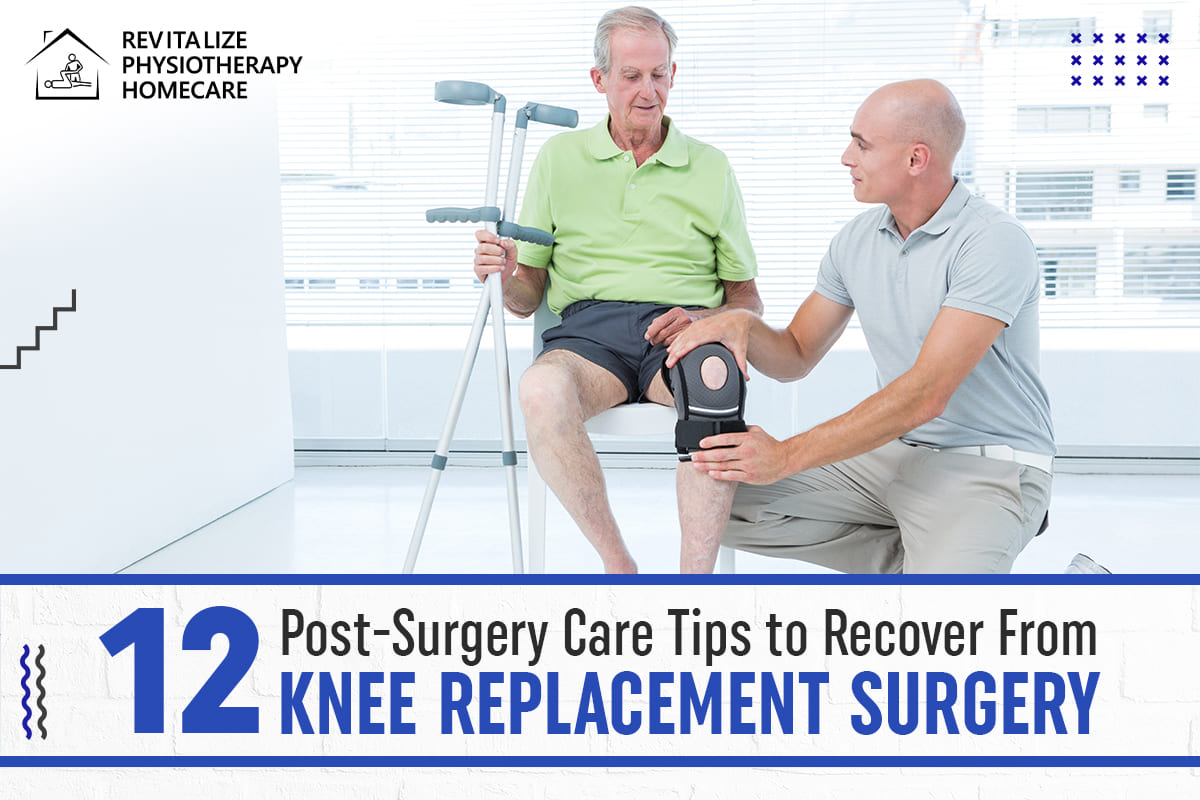12 Post-Surgery Care Tips to Recover From Knee Replacement Surgery
Recovery from knee replacement surgery hinges on the care you take during the post-operative phase. As you step into this critical juncture, the guidance you follow can make a world of difference between a swift return to daily activities and a sluggish, painful recovery.
Before embarking on this journey, consider a tale of two paths. One of them leads through a thicket of discomfort and prolonged dependency. While the other one opens to a smooth road of rapid recovery and restored mobility. The choice is clear, and the steps you take post-surgery are the milestones marking your progress.
One of the most essential steps for post-operative recovery is physiotherapy. It aids patients in regaining their entire range of motion, strength, and function. So that, they can contentedly return to their beloved routines. Physiotherapy serves as a link between the fragility of surgery and the renewed vibrancy of everyday life.
In this blog, we present time-tested tips to help you recover from knee replacement surgery. All these steps are tailored to encourage healing and restore movement.
Most Important Tips to recover from knee replacement surgery
1. Heed a Professional’s Advice
Post-operative instructions are your roadmap to recovery. Adhering to the guidelines provided by your knee replacement clinic in Brampton is imperative. This includes medication schedules, wound care, and recognizing signs of potential complications. Your physician knows your case intimately, so trust their tailored advice for your healing journey.
2. Exercise Frequently
It might seem strange to think about exercising right after surgery. Still, it's the most effective strategy to get people back to their regular routines as quickly as possible. Physical activity also helps to recover movement and strengthen the replacement knee. Even while exercises like leg lifts and quad sets hurt at first, they are essential for a quick recovery.
3. Pain Management
Managing pain is not just about comfort; it's about enabling active participation in recovery. Effective pain control facilitates better mobility. This allows you to engage in necessary physio exercises. Thus, stay on top of your pain with prescribed medications. Also, don’t hesitate to discuss adjustments with your healthcare provider if you feel your pain isn't well-managed.
4. Make Use of a Walker
During the first three to four weeks following surgery, using a walker is advisable. Since it would have been dangerous and difficult to walk normally at that time. The Walker allows patients to move around with less knee strain. As a result, it aids in preventing any discomfort or swelling.
5. Keep Moving
The movement might be the last thing on your mind post-surgery, but it’s a cornerstone of recovery. Gentle range-of-motion exercises prevent stiffness and improve blood flow, speeding up the healing process. Begin with the simple exercises recommended by your surgeon or physiotherapist and gradually increase activity as advised.
6. Ice and Elevate
Swelling is a common post-operative companion, but it doesn’t have to overstay its welcome. Use ice packs and elevate your knee to reduce swelling and discomfort. This simple act can provide relief and aid in reducing inflammation during the initial recovery phase.
7. Knee Replacement Physio at Home
Incorporating 'knee replacement physio at home' into your recovery plan offers the convenience and comfort of receiving professional care in your own space. A Brampton physiotherapist can provide personalized attention, ensuring your exercises are done correctly and your recovery is on the right track.
8. Making Necessary Preparations
A few home preparations are also necessary for a good recovery, especially in the patient's room. Mainly because they wouldn't be able to stand or walk normally for some time. Therefore, everything that they could need—ice packs, bandages, walkers, medication, a cell phone, etc.—should be kept handy. Additionally, a few extra pillows must be supplied. So the patient can raise their lower leg with them.
9. Nutrition and Hydration
Your body is in repair mode and needs the right fuel to rebuild. Focus on a balanced diet rich in proteins, vitamins, and minerals to aid in tissue repair and strength. Hydration is equally important; water plays a critical role in healing and the efficient operation of your body’s systems.
10. Keep Wounds Clean to Avoid Infection
Maintaining a clean and infection-free wound until the incision heals fully is essential. The area where the incision was made needs to be kept dry since moisture could draw bacteria. Before putting on a new dressing, make sure your hands are clean and gently dry tap the wound.
11. Weight Management
The greatest weight-bearing joints in the body are the knees. Therefore, a key element in determining the rate of recovery is body weight. Patients may gain weight following surgery because they spend so much time in bed. Increased weight causes increased strain on the knees. As a result, the operated region may experience significant strain. Thus, patients need to keep an eye on their weight, engage in regular exercise, and maintain a balanced diet.
12. Stay Positive and Patient
Recovery is a marathon, not a sprint. It's natural to encounter days of frustration and impatience. Maintaining a positive outlook can influence your recovery just as significantly as physical care. Celebrate small victories and remain patient; your body is doing the hard work of healing.
Conclusion
Embarking on the road to recovery after knee replacement surgery is a commitment to not just heal but to rediscover the joy of movement without pain.
By adhering to these post-surgery care tips and collaborating closely with healthcare professionals like a Brampton physiotherapist or a Physiotherapy Centre in Brampton, you embrace an active role in your rehabilitation. The journey might be long, but each step is a stride towards reclaiming your lifestyle.
To schedule an appointment with our experts call on 905-452-0222. You can even email us at revitalizephysio@gmail.com.




